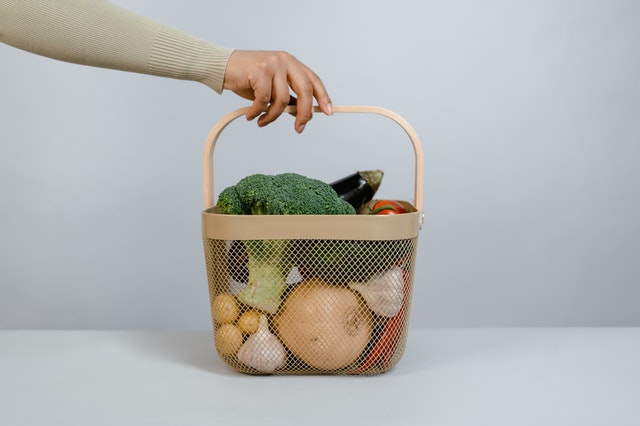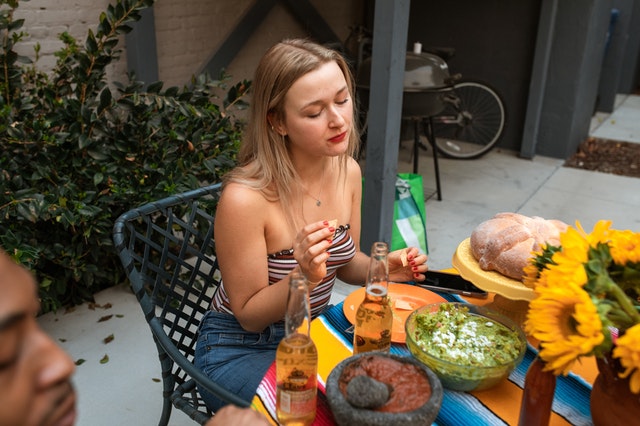Learn about the benefits of eating more vegetables, tricks to enjoy them, and easy ways to fit them into your daily diet!
Common New Year’s Resolutions involve “losing weight,” “getting healthy,” or “eating more vegetables,” but these can be hard to follow through for many people. Most cooking relegates vegetables to the role of side-dish, and many people find them plain, boring, and down-right unpalatable.
It makes no difference what your objective is, or simply expand your palate, eating more vegetables is the answer, and nearly every type is packed with flavour and nutrients – once you learn how to appreciate it.
Reasons to Eat More Vegetables
The Harvard School of Public Health recommends eating nine servings (or 6.5 cups) of fruits and vegetables a day, and the average American eats only three – and sadly, potatoes don’t count. The reasons to up your veggie intake are many – here are a few choice ones:
- While diets high in fruits and vegetables are proven cancer-fighters, recent research from the Harvard School of Public Health indicates that vegetables play a large role in fighting heart disease and stroke.
- Vegetables are abundant in fiber, which is necessary for digestive health. If you’re trying to lose weight, consuming high-fiber meals will help you feel full while consuming few calories.
- High consumption of vegetables aids in prevention of cataracts and macular degeneration. Brightly coloured vegetables are rich in pigments that protect the eye from free radicals.
- Vegetables are generally fairly low in calories (although starchier varieties like sweet potatoes and squash – while still healthy – are around 100 calories per serving), making them the ideal food to fill up on while still not overeating.
- Vegetables have a high water content, helping you get your daily water intake without guzzling litres of water
- Eating healthy foods will improve your mood and energy levels, and vegetables are some of the healthiest foods around.
Easy Ways to Incorporate More Vegetables at Every Meal
At Breakfast:
Breakfast is doubtlessly the trickiest time of day to eat vegetables. For most people, the idea of having vegetables before noon is totally alien, but there are many ways to get a serving of vegetables alongside your morning coffee. If you eat eggs for breakfast, consider cooking up some spinach, peppers, mushrooms, or tomatoes to go inside your omelette, or top your scrambled eggs with a low-sodium salsa.
Leafy green vegetables such as spinach or kale are virtually undetectable in smoothies, and drinking a “Green Monster” for breakfast is a popular online trend. Simply throw a handful of spinach or kale (spinach for the beginner) into your regular breakfast smoothie, and marvel as you drink up a salad that tastes like strawberries and banana. If you’ve got some extra time on the weekend, root vegetables such as sweet potatoes, pumpkin, squash, and carrot can be easily incorporated into traditional foods like oatmeal or pancakes. It’s surprisingly simple and tasty to eat vegetables for breakfast.
At Lunch/Dinner
Eating a mostly vegetable-based meal, like a salad or a big pita stuffed with veggies, is the best way to get as many servings of vegetables as possible. Aim for a variety of nutritional powerhouses like spinach (instead of iceberg lettuce), tomatoes, sprouts, avocado, peppers and beans.
But, if you’re reading this, you’re probably not a big salad eater. Fear not It’s totally possible to eat a veggie-packed pasta or pizza dish, or to enjoy a more traditional meat-and-potatoes meal with many vegetable side-dishes. Add vegetables to your pasta sauce (onions, broccoli, spinach, peppers, tomatoes, and eggplant are some of my favourites) or try tossing your pasta with olive oil and some fresh vegetables. A pizza is, in my opinion, the ideal vehicle for vegetables – peppers, zucchini, olives, spinach, and peppers are particularly delicious.
When preparing side-dishes, look for non-traditional ways to prepare vegetables that you previously disliked. If you’ve always hated over-boiled Brussels sprouts and their bitter aftertaste, consider roasting them in olive oil, pepper, and salt. Instead of eating regular potatoes, try out baked and roasted sweet potatoes for a sweet, flavourful, lower-carb option. Don’t just limit your side-dishes to overcooked carrots and mushy beans! Experiment with Swiss chard, squash, beets, and parsnip, and figure out what you like.
If you’re eating a fairly vegetable-free meal (like a creamy pasta dish or a meat stew), follow up your meal with a big salad! Mixing up romaine lettuce or spinach, assorted chopped vegetables (cucumber, peppers, mushrooms, spinach)
Teach Yourself to Like Vegetables
All of these tips aren’t much use if you don’t enjoy vegetables. However, there are several methods for cooking veggies, as well as many mental tips and tricks you can teach yourself to have you loving vegetables in no time!
Add some flavour! Be it with oil, cheese, nuts, herbs, or spices, there is a lot you can do to gussy up the green matter on your plate. You don’t need to resign yourself to boiling the life out of every vegetable until it has no taste. Most vegetables have a lot of flavour that can be brought out with some olive oil, garlic, crushed red pepper flakes, or some good old-fashioned salt and pepper. Olive oil is a great addendum to most vegetable dishes because the nutrients vegetables provide are actually best absorbed when eaten alongside some fat.
Cut up raw vegetables and keep them on hand for snacking. You’d be amazed how much you like convenience foods. Additionally, crudités like celery, carrots, bell peppers, cucumber, and broccoli make excellent vehicles for delicious healthy dips like hummus and baba ghanoush (as well as my personal favourite, peanut butter! Try it on celery and change your life).
Fake it! Remind yourself that, by eating vegetable, you are providing incredibly nutritious fuel for your body, and are helping yourself to become healthier with every bite. Tell yourself that you enjoy vegetables, and continue to eat them, and you will be surprised to find that you soon do.
Remind yourself why you are doing this. Is your goal to lose weight? Improve your health? Eat a wider variety of foods? Having a strong motivation (looking good in a bathing suit, properly fuelling a run, etc) will remind you that there are reasons you’re willingly eating broccoli.
Lastly, if you really hate a vegetable, don’t drive yourself crazy forcing yourself to eat it! You probably won’t like every veggie. I eat a lot of vegetables every day, and there are still some I turn my nose up at; as a result, I avoid them and focus on others that I love. If you really hate sprouts or kale or radishes, or whatever it may be, find something else to eat instead. Life is too short to choke down a food you hate.

